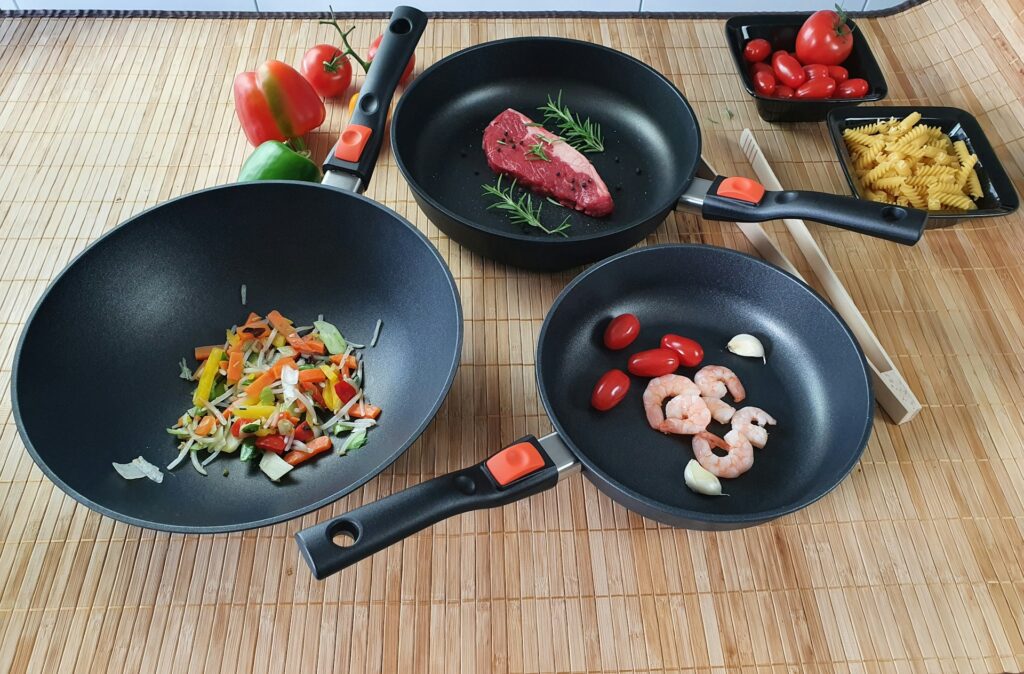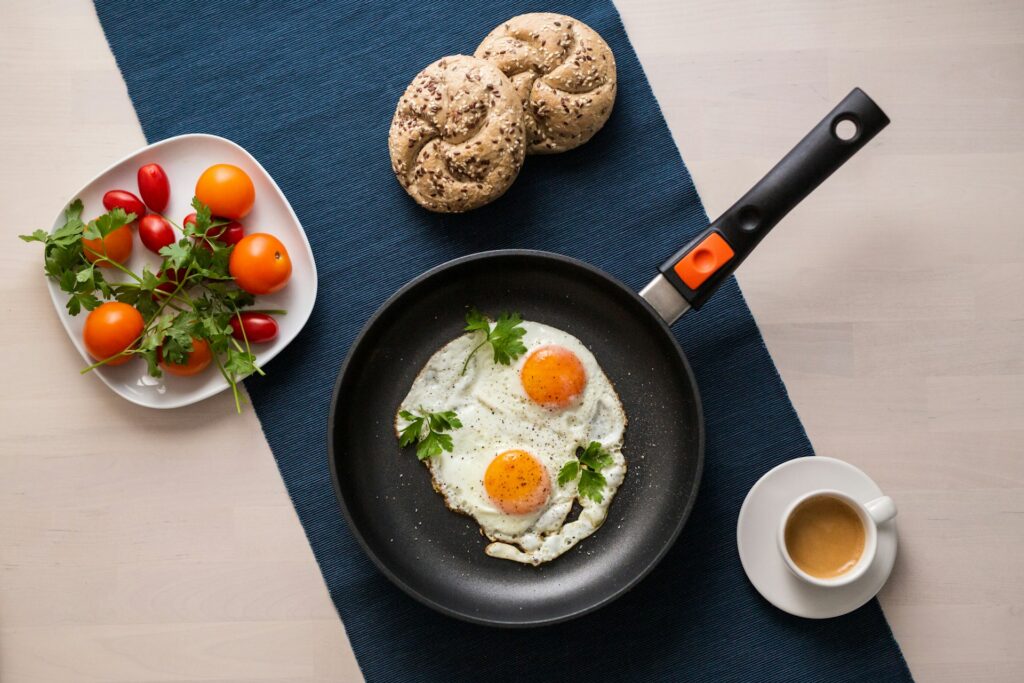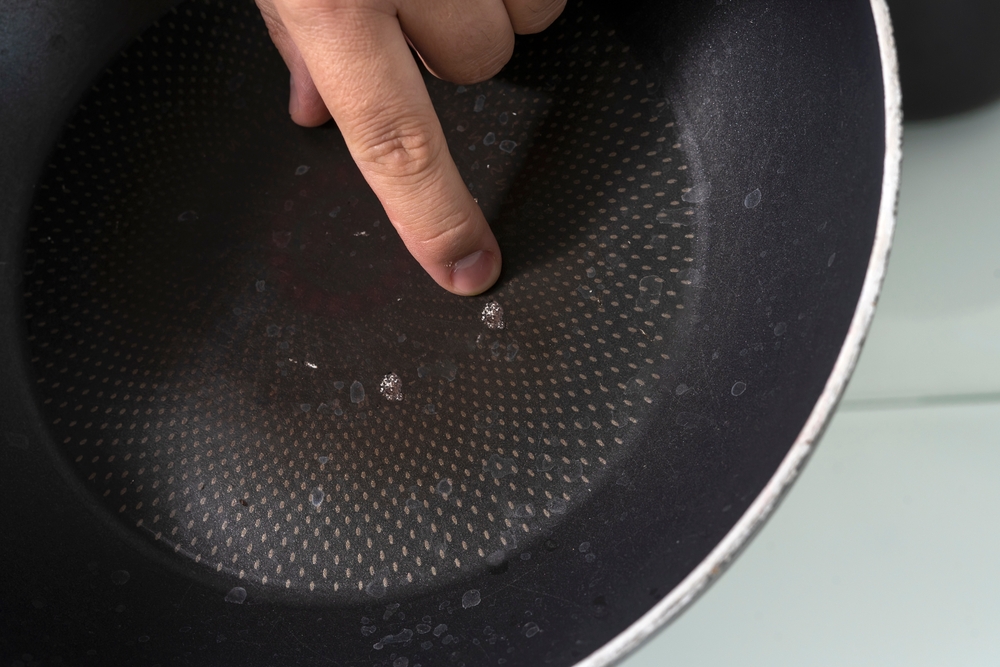Nonstick pans are convenient, easy to clean, and perfect for quick meals. But even high-quality pans can wear out quickly if used incorrectly. Many people unknowingly shorten the life of their pans with small mistakes that add up over time. Here are ten common ways you might be damaging your nonstick cookware and how to avoid them.
1. Using Metal Utensils

Metal spatulas, forks, or tongs may feel sturdy, but they can cut into the delicate surface of your nonstick pan. Each scratch weakens the coating, which then causes food to stick and the pan to lose its smooth performance. Over time, flakes can break loose and make the pan unsafe for cooking. To prevent this, choose utensils made of silicone, wood, or plastic. They glide smoothly across the coating without leaving marks, keeping your pan usable for much longer.
2. Cooking on High Heat
High heat is one of the quickest ways to ruin a nonstick coating. These pans are designed for gentle to moderate temperatures, and exposure to intense heat breaks down the surface. When overheated, the pan can warp, and fumes may be released that affect air quality. Using medium or low heat not only protects your cookware but also gives you more control over your food. For recipes that demand high heat, such as searing steak, switch to stainless steel or cast iron instead of risking your nonstick pan.
3. Putting Pans in the Dishwasher
While some nonstick pans are labeled as dishwasher safe, it is not the best practice. The combination of hot water, powerful detergents, and aggressive washing cycles slowly damages the nonstick layer. This causes the coating to peel or lose effectiveness far sooner than expected. Hand washing is the safest method to keep the coating intact and performing well. Use mild dish soap, warm water, and a soft sponge to clean your pan, and it will serve you reliably for years.
4. Using Cooking Sprays
Cooking sprays may seem convenient, but they create long-term problems. Sprays often contain additives that leave behind a residue which builds up over repeated use. This sticky layer is difficult to remove and interferes with the nonstick surface, causing food to cling and burn. Instead of sprays, add a small amount of oil or butter directly to the pan before cooking. Not only does this protect the coating, but it also enhances flavor and prevents residue from developing.
5. Stacking Pans Without Protection
Stacking pans directly on top of each other seems like a space-saving solution, but it can cause scratches and dents. The weight of one pan rubbing against another damages the coating, even if the contact seems light. Over time, this repeated friction weakens the nonstick layer and shortens the lifespan of your cookware. To avoid this, place a dish towel, paper towel, or a pan protector between each pan when storing them. This simple precaution prevents damage and keeps the surface smooth and intact.
6. Preheating an Empty Pan
Nonstick pans should never be left to heat without food or oil inside. When empty, the surface temperature can rise too quickly, leading to warping and coating breakdown. The pan may become permanently damaged before you even start cooking. To prevent this, always add a little oil, butter, or food before applying heat. This helps regulate the temperature, keeps the coating stable, and ensures even cooking from the start.
7. Cleaning with Abrasive Sponges
Scrubbing with steel wool, scouring pads, or rough cleaning tools may remove food residue, but they also strip away the nonstick coating. Even one aggressive cleaning session can cause scratches that permanently affect the pan. Once damaged, the coating cannot be repaired, and food will stick more often. The best way to clean is with a soft sponge or dishcloth using warm, soapy water. For stubborn food, soaking the pan for a few minutes loosens residue without harming the coating.
8. Using Sharp Knives in the Pan
Cutting food inside your nonstick pan is one of the fastest ways to destroy it. Sharp knives slice directly into the coating, creating deep scratches that ruin the surface. These scratches not only reduce the nonstick quality but also increase the risk of flakes mixing into your food. Always transfer food to a cutting board before chopping, slicing, or dicing. By keeping knives out of your pan, you ensure the coating stays intact and functional for far longer.
9. Storing Food in the Pan

It may feel convenient to store leftovers directly in your nonstick pan, but it is harmful to the surface. Acidic foods like tomato sauces or vinegar-based dishes can erode the coating if left for long periods. Oils and seasonings can also stain or break down the nonstick layer. To protect your cookware, always transfer food to separate containers before refrigerating. This habit keeps your pan safe and prevents unnecessary wear from chemical reactions between the food and the coating.
10. Ignoring Signs of Wear
Nonstick pans are not designed to last forever, and ignoring damage makes cooking unsafe. Deep scratches, peeling layers, or flaking are all signs that a pan is no longer effective. Using it in this condition can release particles into your food and reduce cooking performance. A well-maintained nonstick pan may last several years, but once the coating is compromised, it is best to replace it. Recognizing these signs early helps you avoid both safety concerns and frustrating cooking experiences.
Read More: 6 Surprisingly Delicious Aldi Foods That Beat Homemade Cooking
Disclaimer: This article was created with AI assistance and edited by a human for accuracy and clarity.

